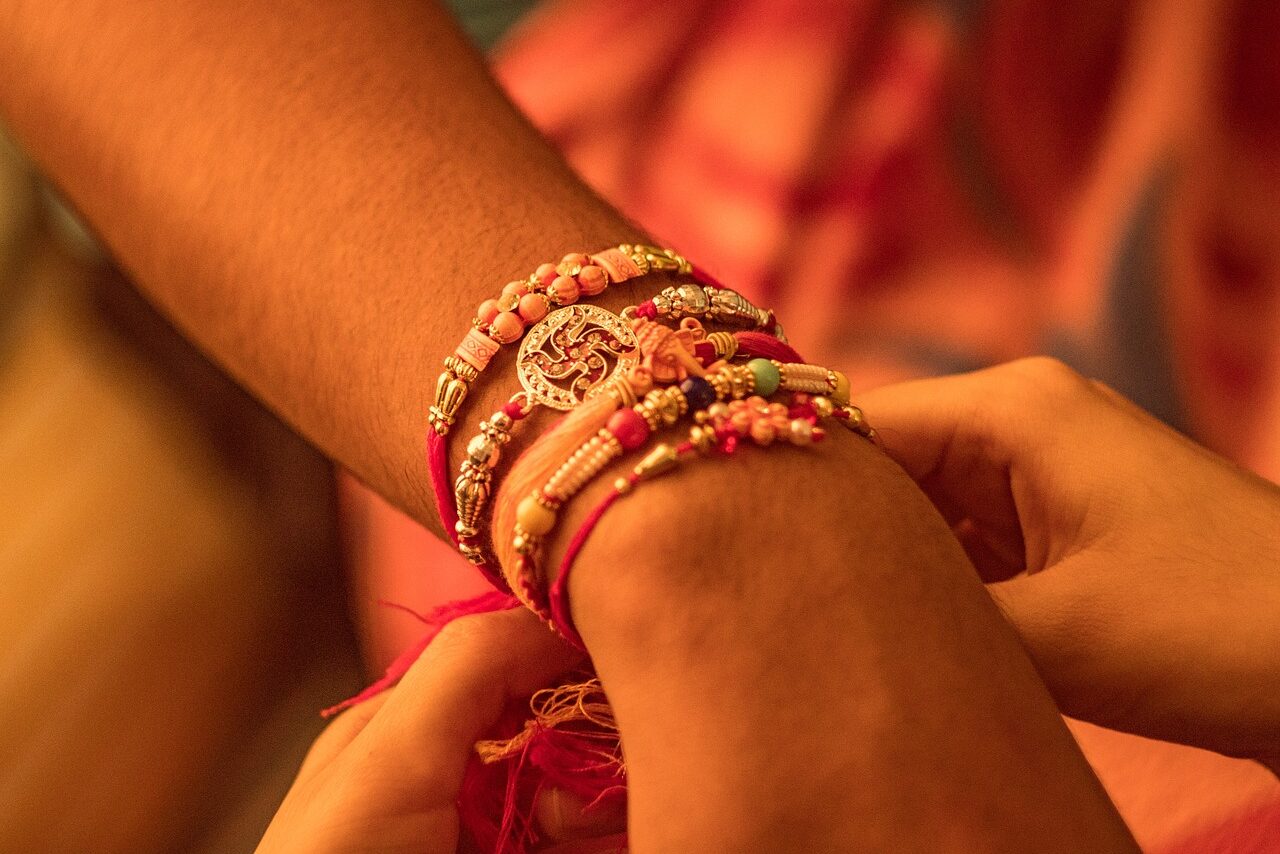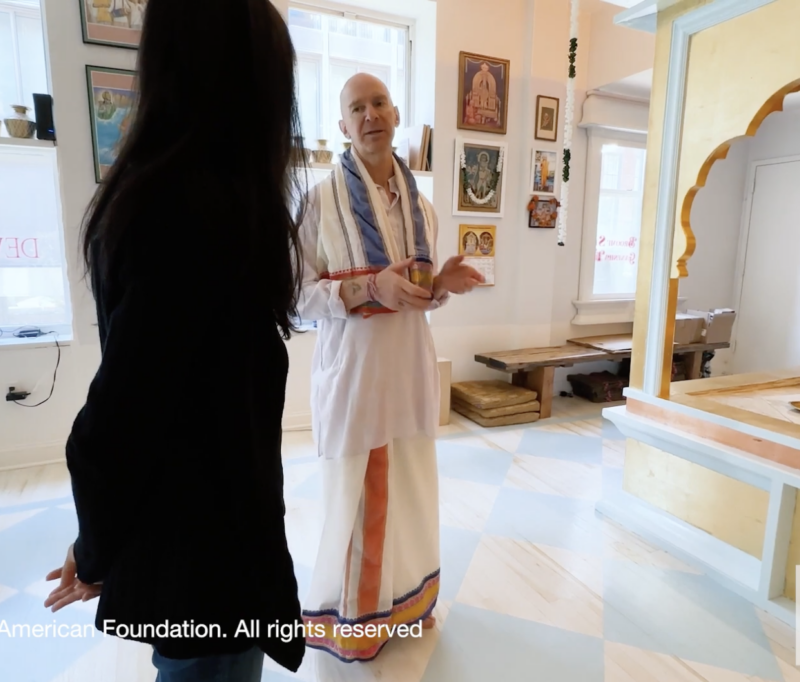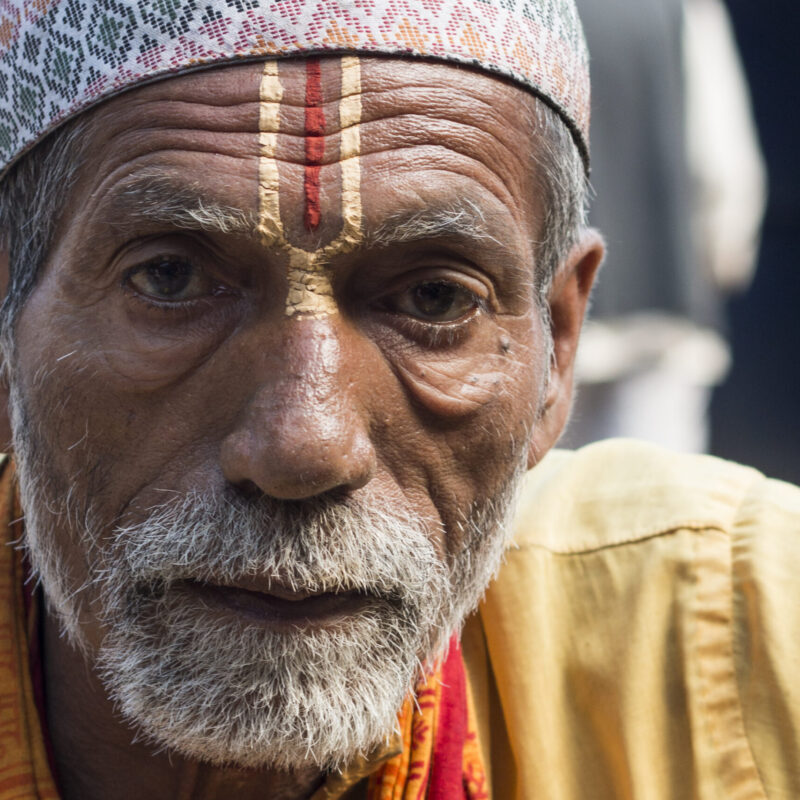
1) Significance of Raksha Bandhan
Originating from Sanskrit, the term Raksha Bandhan translates as “bond of protection.”
Observed on the full-moon day during Shravana (July-August), the 5th month in the Hindu lunar calendar, Raksha Bandhan is a popular Hindu holiday celebrating the love between a brother and sister.
On this day, a sister ties a threaded amulet, known as a rakhi, around a brother’s wrist, honoring their relationship. The bracelet symbolizes the brother’s oath to protect his sister throughout her life, and the sister’s prayers and blessings for protection and wellbeing of her brother. He then gives her a gift, signifying his acceptance of this duty.
Though Raksha Bandhan is specifically related to the bond of a brother and sister, the holiday is ultimately a message of the universal brotherhood and sisterhood that can be recognized amongst all people. Because of this, rakhi are often tied between spouses, friends, and even gurus.
2) Origins of Raksha Bandhan
The tradition of Raksha Bandhan is linked to a number of stories in Hindu lore.
One of the most popular accounts can be found in the Indian epic The Mahabharata, when Lord Krishna cut his finger. Draupadi, wife of the Pandavas (the five brothers who ruled the city), who considered Krishna to be like a brother, immediately tore off a piece of her sari and tied the cloth around his bleeding finger. Smiling and grateful, Krishna promised to return the favor to her some day.
The Srimad Bhagavatam, a sacred text about the pastimes of Lord Krishna, describes another event centered around Bali Maharaja, who was a great devotee of Lord Vishnu.
Won over by Bali’s devotion, Lord Vishnu agreed to eternally protect Bali Maharaja by becoming his doorkeeper. Goddess Lakshmi, Lord Vishnu’s consort, wanting him to come home, disguised herself as a poor woman seeking help, and approached Bali Maharaja. While there, she tied a thread around Bali’s arm, praying for his happiness and protection. Touched by her sincerity, Bali asked what he could give her in return. She then pointed to Vishnu, requesting that her husband be allowed to return home.
3) More recent historical accounts of Raksha Bandhan
Besides the multitude of scriptural narrations referencing the tradition, the pastime of Raksha Bandhan can also be found in more recent histories, including that of Alexander the Great.
Legend has it that in 326 BCE, when Alexander the Great invaded India, Alexander’s wife Roxana, out of concern for his safety, had a thread sent to Indian King Porus, requesting him to not harm her husband in battle. Porus is said to have respected her wish, and refrained from killing Alexander during the famed “Battle of the Hydaspes.” Though Alexander ultimately won the battle, Porus had earned his respect, and was thus made a governor of part of his kingdom.
4) Raksha Bandhan is the same day as Balarama Jayanti
Another Hindu Holiday that takes place during the full moon of Shravana is Balarama’s appearance day.
As described in scriptures followed by practitioners of bhakti yoga (yoga of devotion), Lord Balarama is the elder brother of Lord Krishna, who is worshipped as an avatar of Lord Vishnu in some traditions, and the ultimate form and source of the Divine in others. As he is his older brother, and wants nothing more than to serve and make Krishna happy, Balarama is always guiding individuals on their journey to reestablish their forgotten relationship with Krishna. In fact, Lord Balarama is commonly depicted with a plough, which represents his role in making the hearts of devotees fertile so the seed of bhakti can blossom.
Just as a sister ties rakhi on a brother’s wrist on Raksha Bandhan to invoke his protection, devotees pray to Lord Balarama, the original older brother, to protect them from the vices of life, which obstructs the path of bhakti.
5) How to celebrate Raksha Bandhan
Though observing Raksha Bandhan can be as simple as tying rakhi around someone’s wrist, for those who want to do more, the holiday can be more extravagantly celebrated.
Before Raksha Bandhan even begins, a sister can get into the mood of the holiday by looking for a particular talisman or amulet she thinks her brother might like. Even this simple activity helps to cultivate a consciousness of appreciation for a brother’s unique personality.
On the actual day, sisters customarily perform arati by lighting a small oil lamp and offering it to the family deity. Praying for the well-being of the brother, she then applies tilak (religious mark) on his forehead. After tying the rakhi on his wrist, she traditionally places a sweet in his mouth. The brother then completes the custom by reciprocating in the ritual feeding and giving his sister a gift.
While Raksha Bandhan obviously focuses on sibling bonds, because the holiday is ultimately about family connection, it’s nice to celebrate the festival in the presence of parents, grandparents, aunts, uncles, and any other friends that are close to the family.








































